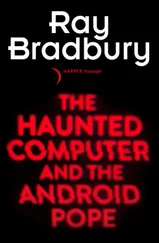The atmosphere inside the headquarters of Joyce Hakansson Associates is like the style of the company’s products—colorful, whimsical, full of exuberance, with music in the air and the sound of children’s laughter in the background. In a bright airy Victorian house in Berkeley, a team of programmers, education experts, graphic artists, musicians, writers, game designers, and children of various ages works together to produce programs for computer users between the ages of three and thirteen.
To walk around this software company for a few minutes is to notice the customary variety of computers and floppy disks on desks, the people staring at computer screens or toying with joysticks, and the mock-ups of product packages and galleys of documentation lying around—all the usual signs of software production. But given the extraordinary nature of the company, there are several not-so-usual features in evidence as well.
First of all, a distinct majority of the staff members are women. Most of them are mothers and have been teachers or child psychologists at one point in their careers. And the children aren’t there just for atmosphere—they are an integral part of the design process and help the production team design and test the products. Fun seems to be one of the key tenets of this company’s philosophy of life.
A half a dozen projects in different stages of production are often going on at the same time in one of the several rooms down the hall from the common room, where the secretary/receptionist’s desk, the bulletin board (a source of in-house humor as well as information), several computers, and the coffee machine are located. The atmosphere, apart from being upbeat, is one of controlled chaos. In the middle of it all is Joyce Hakansson, infecting everyone with her intense enthusiasm and sense of fun.
A middle-aged dark-haired woman with a ready smile, she serves as a kind of director for all the talented people she has assembled in the production team. Neither she nor her co-workers pay much attention to the fact that her mobility is somewhat limited because of a degenerative muscular disease. She is very much the leader and guiding spirit of her team. Like a film director, she uses storyboards to weave together the various educational, aesthetic, and technical components of the programs the team produces. Along with her experience and charisma, Joyce Hakansson brings to the group a reputation for excellence, and long-standing relationships with publishers like Spinnaker, Milton Bradley, CBS, and Simon & Schuster.
Joyce got into the software business not because she was a homebrew enthusiast, an avid programmer, or an entrepreneur, but because she was a concerned mother of two children whose education she thought needed supplementary attention. In fact, her involvement with children and computers in general predated the Altair by a couple of years. Even before that, in the 1960s, she had first become acquainted with the same generation of mainframe, batch-processing IBM computers, now utterly obsolete, that had hooked me on programming. She was in college at the time, and the man who was to become her husband, then an IBM research assistant, had introduced her to the mysteries of a data-processing center.
Joyce still recalls her reaction to the experience: “Like most people, I thought computers were colossal electronic brains that only geniuses could operate. I saw them being used and watched the whirling tape drives. I saw all the people running around in their white coats and badges. When I got to know them I found out that, golly, they aren’t godlike at all. They are intelligent and have certain abilities, but they are ordinary mortals. I found that even I could sit down with a stack of computer cards and make this formidable machine print out a Snoopy calendar for me.”
Her husband left computers in the early 1970s (to teach economics at the University of California), and so, for a brief time, did Joyce. Her initial enthusiasm for computing had by then been dampened by the feeling that computing just wasn’t within her intellectual grasp; she thought she wasn’t “mathematical” or “logical” enough for it—an assumption most people made back in the days when it seemed that all computers could do was solve complicated equations for scientists. Still, it was Joyce’s concern over her so-called lack of mathematical aptitude that in time led to a deeper concern with the educational process in general and her children’s education in particular. And that, in turn, eventually brought her back to computers.
As Joyce describes it: “I stayed away from mathematics courses in school, but what I didn’t realize at the time was that the science courses I was enjoying required mathematical and logical reasoning skills. The problem was that I didn’t identify what I liked to do with what I called ‘mathematics.’ I always saw math as restricted to calculating skills and the formal kinds of things that happen when you are in a class and have pencil and paper and problems to solve. It was only much later when I had children of my own that I realized that math is a much broader discipline than calculation.
“I realized that I had been thinking and reasoning in mathematical ways all my life and that I was actually fairly good at it. I guess I felt I missed out on something, so I got involved with my children’s education when they were in elementary school. I saw that they weren’t teaching children any differently than when I had gone to school, and children were going through the process with that same fear of math and that same feeling of inadequacy that I had experienced. So I asked the school if I could start a math lab, with lots of things that would be attractive to children—puzzles and colorful pictures and art tools and music.”
The seeds of Joyce’s career in children’s software were planted when the school agreed to let her have her math lab. Of course the school couldn’t provide any funding, so Joyce and a friend recruited volunteers and raised money. Pretty soon, the volunteers started discussing all the things they wanted for the math lab, and somebody brought up the idea of computers. That made sense to Joyce, who happened to be the only one who had any computer-related experience. So they called IBM and said they wanted to buy a computer.
“I’m sure the salesman thought we were representing the school district,” Joyce recalled, smiling mischievously while she recounted the event to me. “He came racing over to sell us this $200,000 computer and found these suburban housewives with chocolate brownies and white wine, wanting to talk to him about computers. He was charming. He told us that what we really wanted was an educational time-sharing system that we could access through a remote terminal. We didn’t know what all those terms meant, but we went about trying to find such a thing.”
Joyce was living about thirty miles from Berkeley at the time, and it happened that just the kind of system she wanted was located at the Lawrence Hall of Science, an interactive science museum in Berkeley. The Hall, as it is called, is associated with the University of California and sponsors special science education programs for children. Lawrence Hall had a large computer that could actually be connected, through a kind of telephone hookup, to a terminal that was located at Joyce’s suburban school.
One of the conditions that Joyce insisted upon was that all the teachers and volunteers in the math lab learn how to run the system so that they could all be available to help the children learn how to use it. A class would have to be set up. The people at Lawrence Hall thought that this was a terrific idea and in the summer of 1973, the first computer training classes for lab volunteers started at the Hall’s computer lab. First, Joyce taught herself—with the help of Lawrence Hall personnel—and then she taught her fellow volunteers.
Читать дальше










